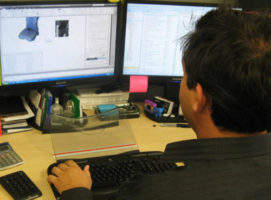National Aircraft Interiors Comprehensive Solutions for Aircraft Seating, Covers, Flooring, Seatbelts and Harnesses


National Aircraft Interiors is a manufacturer of aircraft interiors products, with particular expertise in upholstery. The company has provided services globally for almost every type of aircraft since 2001, from commercial airliners to private jets.
We offer customised services for aircraft interiors, with our teams of technicians and upholsterers ensuring our solutions achieve customer satisfaction, with a strong base of clients to back this up.
Dress cover manufacturing for airline seats
NAI has thorough procedures in place to ensure that the products we manufacture are of a consistently high-quality.
We hold a certificate in Part 148 manufacturing organisation, with our production facility comprising computerised machines for sewing, cutting and finishing, as well as labelling equipment.
Dress covers are manufactured by highly trained machinists and pattern cutting personnel.
Meeting clients’ exact needs is a cornerstone of our business, with full flexibility in our services available.
In the event of an overflow of work, NAI occasionally uses approved subcontractors, but retains quality control of inventory, traceability, labelling and burn data. This ensures that even larger orders meet production deadlines and are received by customers within the agreed timeframe.
Each component manufactured by NAI is subject to full traceability, which is especially important in environments where regular change-outs occur.
Leather interiors for aircraft
Using leather for interiors adds a touch of style for airline passengers to appreciate, with numerous opportunities for creating unique designs through use of perforated panels and personalised stitching.
It is down to individual airlines to decide if leather is the right option for their respective brand. It is a comfortable, durable material with a long lifespan, and can be easily cleaned and repaired.
National Aircraft Interiors has a number of leather suppliers worldwide to provide the solution for whatever colour, texture or thickness the customer requires. We can carry out the necessary design and production work to ensure that the client’s vision is realised.
Comprehensive overhaul of airline seating
NAI provides comprehensive overhaul and upgrades to aircraft seating, with design, manufacturing and installation services for upholstery and covers. This is in addition to new cushions and covers in materials such as leather, sheepskin, foam and standard fabric.
With these services, an economy-class fleet can be easily upgraded to business-class for the cost of routine exchange of dress covers and upholstery.
Floor covering maintenance and replacement solutions
Floor coverings are a vital component of an aircraft interior and it is essential to maintain a high standard. We provide a manufacturing and maintenance programme for aircraft flooring, comprising inspection and replacements to areas particularly susceptible to wear and tear.
Our services are highly efficient, with personnel carrying out overnight maintenance and overhaul services to flooring, without any major disruption to airline operations.
We work with a variety of suppliers of flooring globally so we can meet the customer’s exact specifications. From NAI’s in-house facilities, we provide cutting and design services, as well as a broad range of options available for edging. Our flexible services enable us to meet tight deadlines.
Burn test programmes for aircraft interiors
NAI provides comprehensive burn test programmes in support of the manufacturing of dress covers, which include plan generation, inspection, cushion fabrication, and testing for flammability of materials.
As flammability testing is such an integral part of aircraft interiors, we have established our own laboratory specifically to carry out burn testing to meet the present FAR§25.853(a) batch testing requirements. Because this service is provided in-house, the timetable is more efficient and traceability is boosted.
A contracted third-party carries out FAR 25.853(c) combination burn testing requirements in a specialist laboratory.
We follow all regulations and can progress projects efficiently and economically.
Maintenance and cleaning of aircraft interiors
Ensuring that seat covers are effectively maintained is a vital component of interior management. Airlines want their interiors to look their best permanently, but with passengers often seated for long-haul routes and inevitable spillages and other mishaps, it is challenging to maintain a pristine environment.
NAI offers contracts for seat cover maintenance and cleaning for both long and short-haul flights, which includes changing entire seats if necessary. Maintenance services can be customised to meet specific requirements.
Seatbelt and harness repair and replacement
NAI is an approved provider of services for the supply, repair and upgrade of seatbelts and harnesses used in the majority of aircraft. Due to the frequent use of these items, wear and tear is an ongoing problem. Our refurbishment services are a cost-effective solution for ensuring that your seatbelts meet stringent safety requirements.
We replace webbing, and service or replace retractors and hardware where necessary. Once complete, an authorised release certificate is issued deeming them suitable for use.
For seatbelts and harnesses that are beyond repair, we can provide new components where necessary. We ensure that our services offer a prompt turnaround time and help avoid costly downtime.
NAI offers comprehensive services for the production and maintenance of all types of aircraft cargo nets, slings, restraints and load straps, which comply with all the relevant international regulations.
Products and Services
Video
White Papers
Related Projects
Press Release
New Zealanders seem to have both aviation and design innovation in their genes and New Zealand companies have created a number of ripples worldwide in recent years.
Read moreNew Zealanders seem to have both aviation and design innovation in their genes and New Zealand companies have created a number of ripples worldwide in recent years.
Read moreRegional Offices
90 St Vincent Street
Nelson 7010
New Zealand















